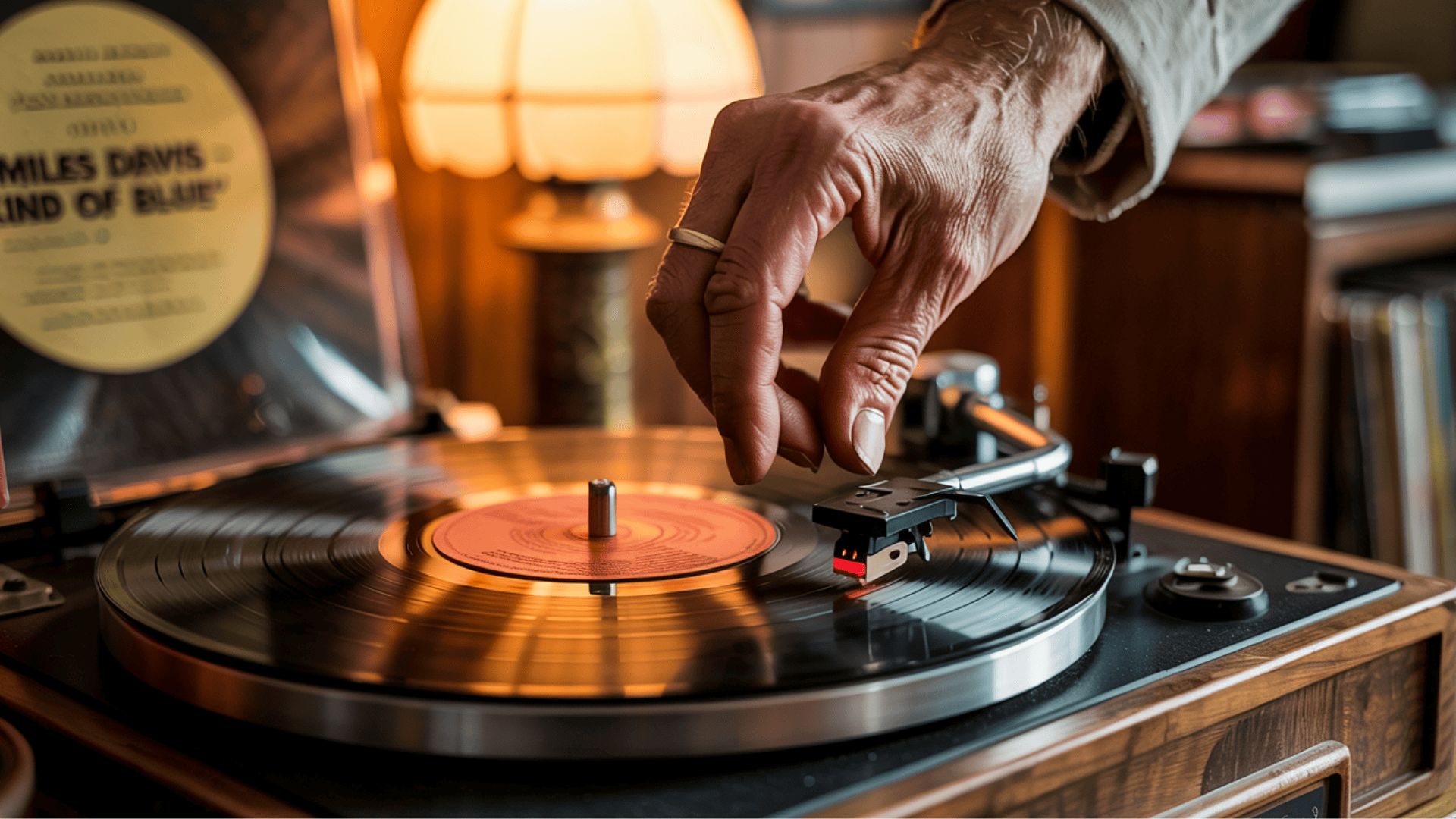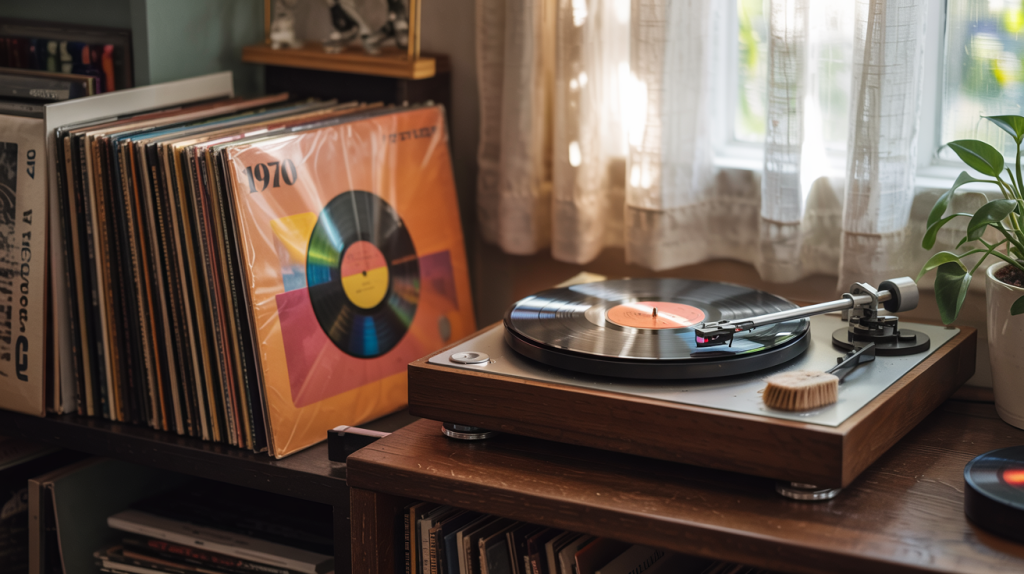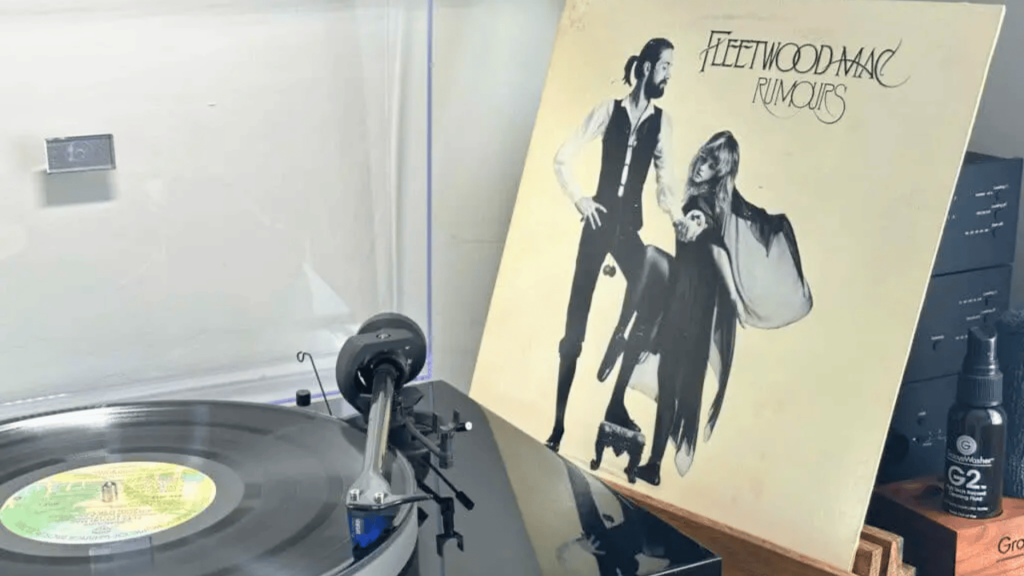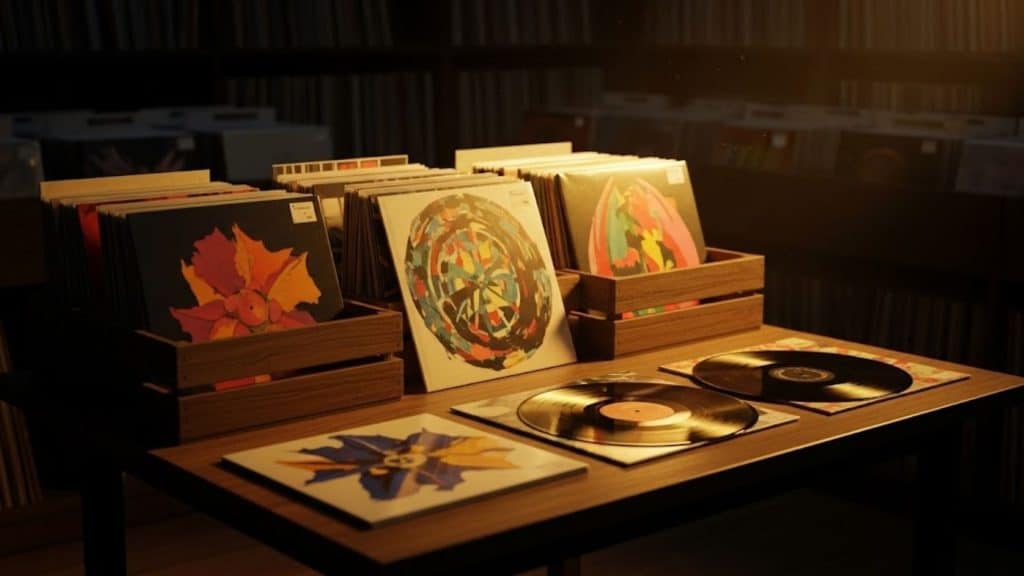Listening to vinyl is a special experience, but it’s not always as flexible as digital music.
If you’ve ever wanted to move past a track, you might have asked yourself, Can you skip songs on vinyl? The answer is yes, with a little care, it’s possible to lift the needle and start the next song manually.
In this guide, you’ll learn how to do it safely and accurately. We’ll also walk through helpful tools, beginner-friendly tips, common myths, and which turntables make skipping easier. If you’re looking for more control over your vinyl listening, this guide is for you.
Is Skipping Tracks on Vinyl Even Possible?
Vinyl records are fully analog. That means the music is stored as tiny grooves in a spiral on the record’s surface. Each groove holds one long, continuous stream of audio.
You can’t just tap a button like you would on Spotify or a CD player. There’s no “skip” function built into a turntable. But you can still skip to another song manually.
You do this by carefully lifting the tonearm and moving the needle to the part of the groove where the next track starts. It’s not hard, but it does take a bit of attention and care.
How to Skip Tracks on Vinyl Safely and Accurately
Skipping a song on vinyl takes a steady hand and a little patience. Follow these steps to do it without harming your record or stylus.
Step 1: Locate the Track
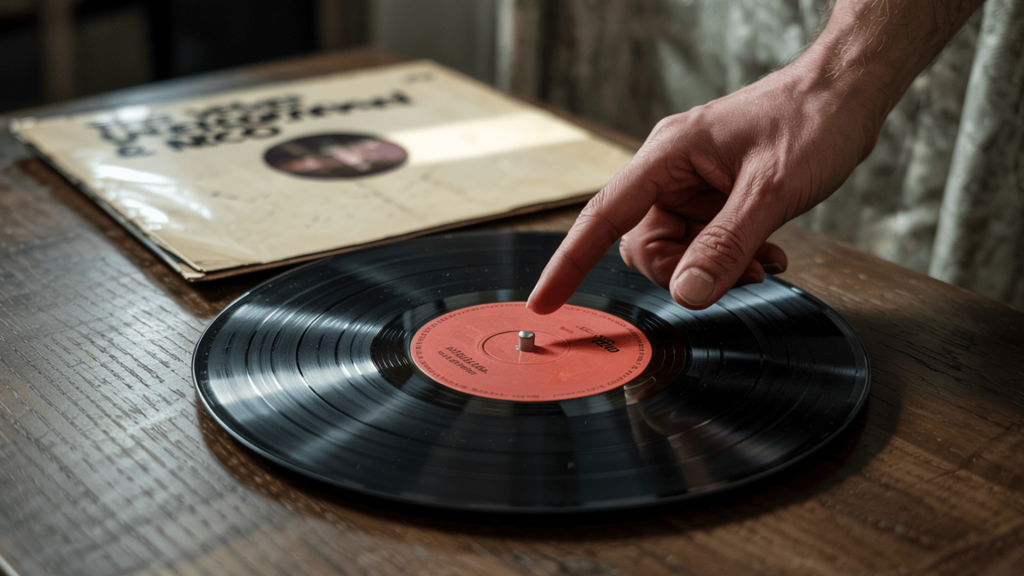
A small gap in the grooves separates each song on a vinyl record. These gaps look like slightly wider spaces on the record’s surface.
To spot them more easily:
- Hold the record under a good light source
- Look for the darker rings that break up the grooves
- Use the tracklist on the album cover to estimate where each song starts
This takes some trial and error, especially if the record is dark or the gaps are tight.
Step 2: Lift the Tonearm with the Cueing Lever
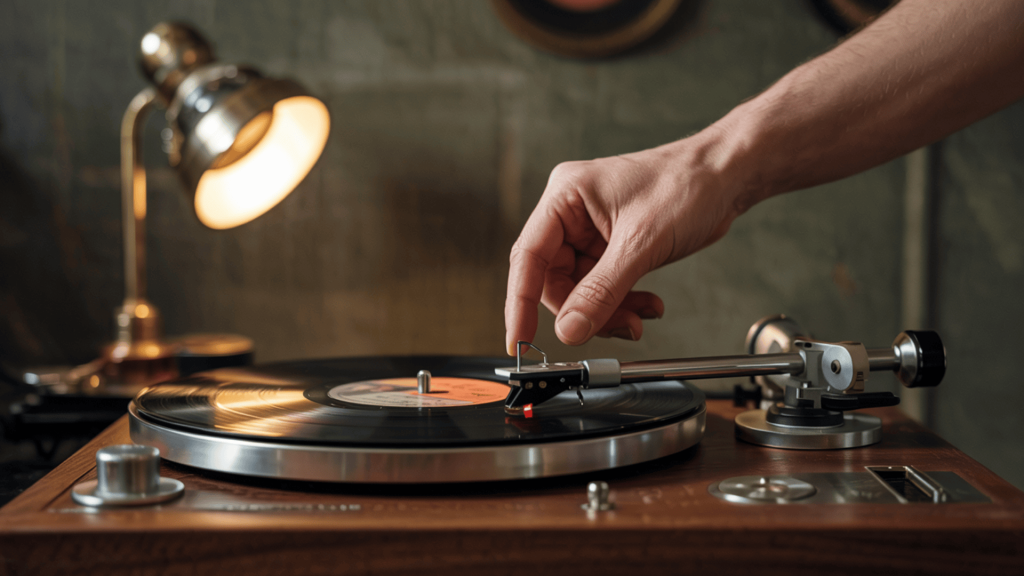
Most turntables have a small lever that raises the tonearm gently. Use this instead of lifting the arm by hand. Why this matters:
- The cueing lever keeps your needle stable
- It lowers the risk of scratching the surface
- It lets you line up the needle without pressure
Avoid grabbing the tonearm and dropping it down directly. That can damage the record or the stylus.
Step 3: Move the Stylus to the Right Spot
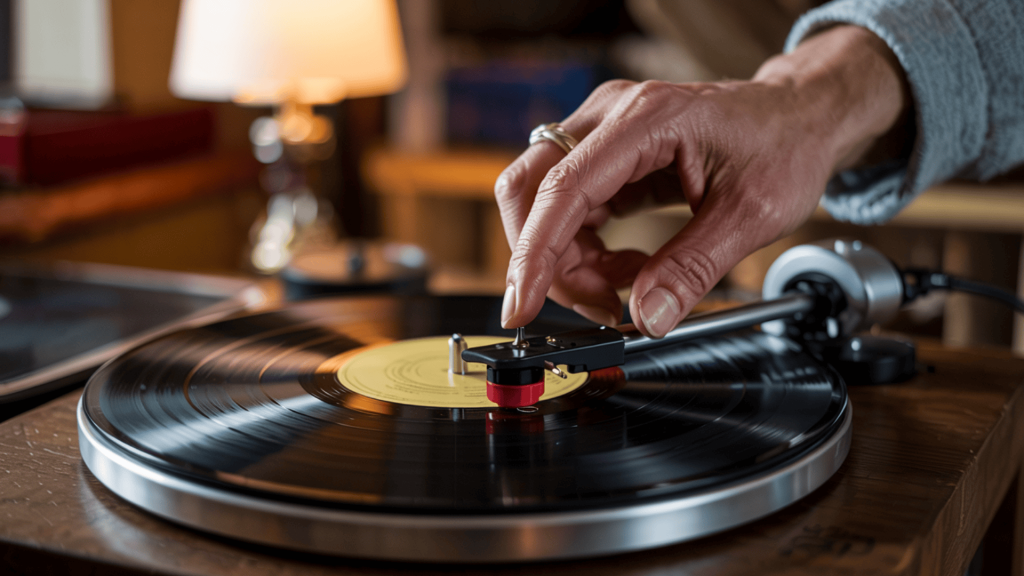
Once the tonearm is lifted, slide it gently over to the groove gap for the next track. This is the most delicate part. Tips to get it right:
- Aim just before the gap where the new song begins
- Lower the arm slowly using the cueing lever
- If you miss the mark, lift and try again, don’t drag the needle
With practice, you’ll get better at hitting the right spot the first time.
Step 4: Gently Lower the Stylus
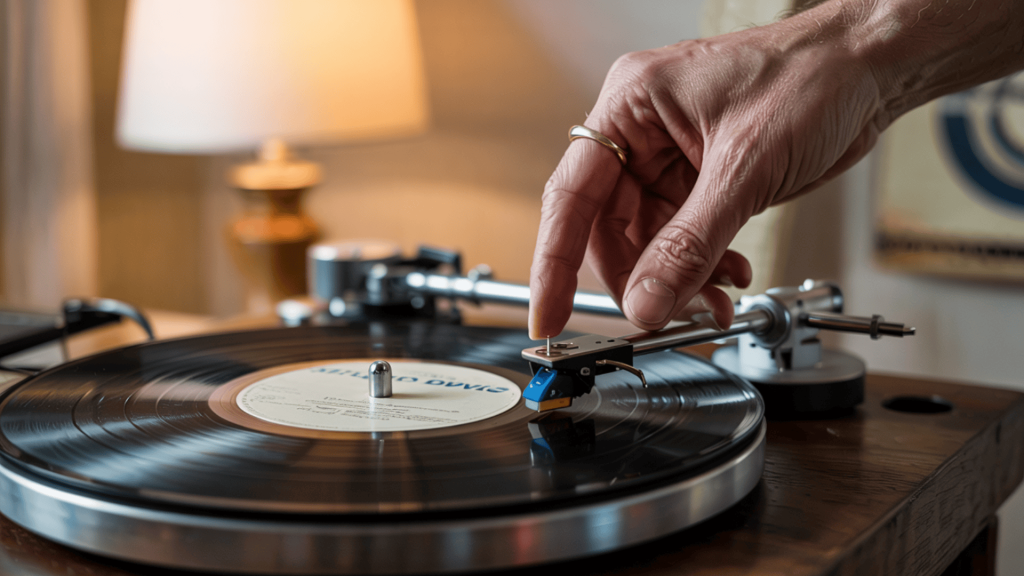
Now it’s time to let the needle touch the record again. Do this slowly using the cueing lever.
Keep an eye out for:
- Needle bounce means you dropped it too quickly
- A scratching sound stops and lifts the needle immediately
When done right, the track should start cleanly without any skips or damage.
Is It Bad to Skip Songs on Vinyl?
Skipping songs on vinyl isn’t always bad, but it can lead to issues if done carelessly or too often. Moving the stylus manually puts wear on the needle, especially if it’s dropped too quickly or not aligned properly, which can shorten its life or cause damage.
Mishandling also risks scratching the grooves, creating pops, skips, or long-term sound problems. That said, it’s usually fine to skip tracks once in a while if you’re gentle, use the cueing lever, and know where to place the needle.
However, you should avoid skipping if the record is fragile, the stylus is worn, or the track gaps are hard to see; playing through or waiting to flip the record may be safer in those cases.
Tools to Help You Skip Tracks More Safely
You don’t need fancy gear to skip tracks on vinyl, but a few simple tools can make it easier and safer.
- Cueing levers and tonearm lifters: Most modern turntables have a cueing lever. It lifts and lowers the needle gently so you don’t have to do it by hand. If yours doesn’t have one, external tonearm lifters can add that function.
- Lighted turntable setups: Good lighting helps you see the groove gaps more clearly. Some turntables come with built-in lights. If not, a desk lamp or small LED can make a big difference when finding the start of a track.
- Groove magnifiers or visual aid apps: Magnifiers can help you see the groove spacing better, especially on dark vinyl. Some vinyl enthusiasts also use phone apps or printed guides that map out where each song starts based on timing.
These tools won’t do the skipping for you, but they’ll help you do it with more control and less risk.
Are There Vinyl Players That Let You Skip Automatically?
Some modern turntables do make skipping easier, even automatic in a few cases. But the features vary depending on the type of player you have. Manual turntables require you to lift and place the tonearm yourself. Automatic ones can raise, move, and lower the tonearm at the press of a button.
Here’s a quick comparison:
| Feature | Manual Turntable | Automatic Turntable |
|---|---|---|
| Tonearm control | Hand-operated | Button or switch-operated |
| Skipping ease | Fully manual | Semi-automatic to automatic |
| Cost | Usually less expensive | Often more costly |
| Setup complexity | Simple | Slightly more complex |
| Risk of damage (if careful) | Low | Very low |
Manual players: It gives you more control but requires precision. In comparison, automatic players offer convenience, especially for beginners.
Some turntables take it a step further and let you skip tracks automatically.
AT-LP3: A fully automatic player that lifts and returns the tonearm for you, but still requires manual placement for specific tracks.
ELP Laser Turntable: Uses a laser instead of a needle and can skip tracks digitally without touching the surface. It’s high-end and expensive but very gentle on records.
Unlike traditional players, these models use sensors or advanced mechanics to detect and track gaps and move with more precision. That makes them ideal for people who want the vinyl experience with modern convenience.
Tips for Beginners Trying to Skip Tracks
If you’re new to vinyl, it’s important to take your time and build good habits. These tips will help you skip tracks safely without damaging your records. Here’s what to remember:
- Avoid practicing on expensive or brand-new vinyl until you’re confident.
- Dust and dirt can cause the needle to skip or scratch the grooves.
- Place them on the record sleeve (not the vinyl) to help locate songs easily.
- Try skipping when you’re testing your gear, not during serious listening sessions.
These small habits can help you skip safely while building your confidence.
Skipping Myths and Misconceptions
There are a few common myths about skipping tracks on vinyl that can confuse beginners. One of the biggest misconceptions is that you can’t skip songs on a record, but that’s simply not true.
You can manually move the needle to a different track with care. Another myth is that skipping always damages your vinyl. While rough handling can cause harm, gentle skipping with the proper technique is safe.
Some also think only digital music can be skipped, but that’s just a misunderstanding of how vinyl works. Though it’s not as simple as pressing a button, skipping on vinyl is definitely possible.
Conclusion
Skipping tracks on vinyl isn’t as quick as pressing a button, but it is possible, and now you know how to do it safely. With the proper technique and a bit of care, you can enjoy just the songs you want without damaging your records.
You’ve learned what tools help, what to avoid, and the answer to that common question: Can you skip songs on vinyl? Just remember to take your time and practice on older records first.
Want to get more from your turntable setup? Check out my other blogs for more vinyl tips, gear guides, and beginner-friendly advice to upgrade your listening experience.

